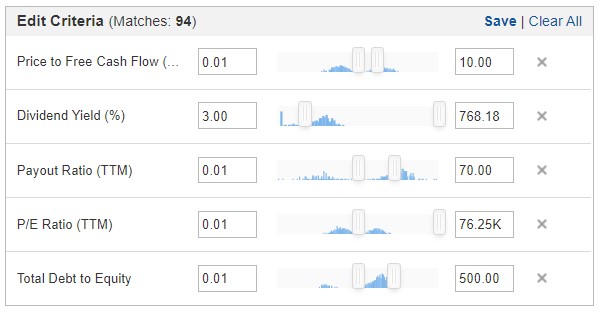Investors interested in a source of income with capital appreciation potential may benefit from owning the best Canadian dividend stocks available today.
An allocation to dividend-paying companies can provide ballast for a portfolio because these companies are often well-established with attractive cash flows and predictable futures. This is especially relevant to the current global outlook of aggressive monetary policy, slowing economic growth and imminent recessions, which will likely see investors favour profitability over exciting but unproven growth stories.
But before we get into potential stock picks for your portfolio, let’s cover the basics of what a dividend is.
What are dividend stocks?
Certain companies with excess earnings beyond their working and growth capital requirements decide to return these earnings to shareholders in the form of cash or DRIP dividend payments, usually on a quarterly or monthly basis.
Shareholders will receive a given dividend payment so long as they own the stock before the publicly announced ex-dividend date, or the cutoff point to receive payment. The ex-dividend date precedes the record date, when the company consults its books to determine who is entitled to a payment, which is usually issued a few weeks after the ex-dividend date.
As we referenced above, companies tend to issue dividends because they are in good-enough financial standing to achieve their objectives while incentivizing investors with regular payments. This means that smaller, growth-focused companies are more likely to invest their earnings into business development, instead of dividend payouts, compared with billion-dollar operations where meaningful growth is harder to come by.
Accordingly, what separates a best Canadian dividend stock from an also-ran is financial health and a long history of dividend payments, allowing investors to build conviction in a company as a reliable income source into the future.
10 top Canadian dividend stocks to buy right now
After screening the Canadian market for the healthiest companies (more on this later), the following stocks appeared as the top 10 choices to begin a deeper investigation into their future growth:
- Canadian Natural Resources: 4.35% dividend, or C$3.60 per share per year.
- Bank of Montreal: 5.2% dividend, or $5.88 per share per year.
- Bank of Nova Scotia: 6.8% dividend, or $4.24 per share per year.
- Canadian Imperial Bank of Commerce: 6.4% dividend, or $3.48 per share per year.
- Manulife Financial: 6% dividend, or $1.46 per share per year.
- Great-West LifeCo: 5.4% dividend, or $2.08 per share per year.
- National Bank of Canada: 4.2% dividend, or $4.08 per share per year.
- Power Corporation of Canada: 5.8% dividend, or $2.10 per share per year.
- Tourmaline Oil: 11.7% dividend, or $7.79 per share per year.
- Mullen Group: 5% dividend, or $0.72 per share per year.
All 10 companies are stalwarts in the Canadian economy with long histories of profitability, consistent dividend increases every year for the past five years, and bright futures in their respective industries. This is a good start to due diligence and a green light to delve further into the companies’ investor materials. To that end, here’s a broad overview of what places our picks among the best Canadian dividend stocks to buy right now:
Canadian Natural Resources
As one of the largest oil and natural gas producers in western Canada, supplemented by operations in the North Sea and offshore Africa, Canadian Natural Resources is an unquestionable leader in Canadian hydrocarbon extraction.
The company’s stock has gained more than 90 per cent since 2018 on the back of 4x net income growth to almost $11 billion in 2022.
With oil prices remaining around nine-year highs, a sustainable dividend payout ratio of 49 per cent, and dividend growth from $0.50 in 2013 to $3.60 in 2023, Canadian Natural is poised to continue raking in profits with the transition to renewables likely still decades away from displacing fossil fuels.
Based on discounted cash flows, CNQ stock is currently trading at a 40 per cent discount to fair value.
Bank of Montreal
Firmly established as one of Canada’s Big Six banks, the Bank of Montreal is a powerhouse in global financial services across capital markets, wealth management and personal and commercial banking.
BMO stock is up by 6.26 per cent over the past five years thanks to growing net income nearly three times from $5.4 billion in 2018 to approximately $13.5 billion in 2022. The bank also holds more than $340 billion in cash and short-term investments as of Q2 2023, affording it stability and inorganic growth potential, with a comfortable 126 per cent coverage for bad loans.
Seeing as the $80 billion market cap company is an integral part of Canada’s concentrated financial sector, its dividend payout ratio stands at a safe 57 per cent with dividend growth from $2.96 in 2013 to $5.88 in 2023, and BMO shares are trading at a 47.4 per cent discount to fair value based on discounted cash flows, potential shareholders have strong reasons to put their dollars behind the stock moving forward.
Bank of Nova Scotia
Scotiabank, another of Canada’s Big Six banks, is a leader in personal, commercial and private banking, as well as wealth management and capital markets, with a specific concentration in Central and South America.
While BNS stock is down by 17.09 per cent over the past five years, the company has managed to grow net income from $8.5 billion in 2018 to just under $14 billion as of April 2023. Confidence in management is additionally substantiated by roughly $400 billion in cash and equivalents as of April 2023, 108 per cent coverage for potential bad loans, and 73 per cent of Scotiabank liabilities stemming from low risk sources of funding.
BNS stock is currently trading at a 48.5 per cent discount to fair value, with a reasonable dividend payout ratio of 61 per cent, and dividend growth from $2.48 in 2013 to $4.24 in 2023, meaning it is likely to keep delivering on earnings expectations as the developing nations it focuses on solidify as global industrial players.
Canadian Imperial Bank of Commerce
The Canadian Imperial Bank of Commerce (CIBC), among the smallest of Canada’s Big Six banks, serves some 11 million businesses and individuals across banking, wealth management and capital markets.
The company is well-capitalized with about $220.97 billion in cash and equivalents and is currently trading at an enticing 56 per cent discount to fair value, according to discounted cash flows. This denotes a lack of market enthusiasm and a potential value play, given that the stock has returned a loss of about 10 per cent over the past five years.
CIBC’s allowance for bad loans stands at an impressive 146 per cent, with a reasonable dividend payout ratio of 65 per cent, and dividend growth from $1.92 in 2013 to $3.48 in 2023, affording shareholders confidence as the company continues to make inroads into high-touch, high-growth markets.
Manulife Financial
Manulife is one of Canada’s largest insurers and wealth managers with a footprint that extends into the United States and Asia.
Shares have gained approximately 2.30 per cent over the past five years, reflecting higher insurance payouts during the pandemic, as well as high inflation cutting into returns from invested insurance premiums. That said, the company has grown net income from $4.6 billion in 2018 to $9.5 billion as of June 2023, with about $26.5 billion in cash on hand, potentially signaling a stretch of investor pessimism to be taken advantage of.
In terms of debt, Manulife’s cash covers all of its liabilities, with interest payments covered 10.6x by earnings before interest and taxes (EBIT). This comforting level of redundancy, coupled with a conservative dividend payout ratio of 20 per cent, dividend growth from $0.52 in 2013 to $1.46 in 2023, and shares’ appetizing 62.7 per cent discount to fair value, lends credence to Manulife as a core holding for long-term investors.
Great-West LifeCo
Great-West LifeCo is a diversified financial services company with more than 175 years of history and more than $1 trillion in assets under management across Canada, the United States and Europe. The company’s in-house brands include Canada Life, Irish Life, Empower and Putnam Investments.
Shareholders have been rewarded over the past five years with a 20.82 per cent return spurred on by net income growth from $3 billion in 2018 to approximately $17 billion by June 2023.
The company is fortified by $164 billion in cash and equivalents as of June 2023, which more than covers its total debt of just $9.2 billion, as well as EBIT that covers interest payments by 13.9x, affording it a considerable margin of safety.
While seasoned investors should rightly raise questions about Great-West’s 84 per cent dividend payout ratio, these concerns are dispelled by:
- The company’s average earnings per share growth of 6.2 per cent and return on equity of 13.9 per cent (as of Q4 2022)
- Dividend growth from $1.23 in 2013 to $2.08 in 2023
- The insurance business’ unique cash flow benefits, with the company reporting $238 billion in total invested assets in Q4 2022
Trading at a 55 per cent discount to intrinsic value, GWO shares look extremely underappreciated, especially given a customer base of more than 38 million and clear momentum across its portfolio to propel further dividend growth.
National Bank of Canada
Next on our list of best Canadian dividend stocks is National Bank, the smallest among Canada’s Big Six Banks at $33.23 billion in market cap. The institution, founded in 1859, offers financial services to individuals, businesses, institutional clients and governments across the country through three business segments in Canada – personal and commercial banking, wealth management and financial markets – as well as U.S. specialty finance and international markets expertise.
The company’s profitable operations across almost 3 million clients yielded net income of just over $2 billion in 2018 with steady growth to $3.3 billion in 2022, with another $1.7 billion through April 2023, resulting in impressive stock returns of 52 per cent over the past five years.
Backed by almost $160 billion in cash and short term investments, National Bank boasts a 131 per cent allowance for bad loans – which stand at only 0.4 per cent of its loan book – and more than 70 per cent of liabilities from low-risk sources.
Prospective investors should take note that the company’s conservative 40 per cent dividend payout ratio leaves ample room for growth, with annual per share payments increasing from $1.74 in 2013 to $4.08 in 2023.
You can purchase shares today at a 39.1 per cent discount to fair value as management vies for a return on equity between 15-20 per cent over the medium term catalyzed by the company’s strong position in Quebec and ongoing global expansion efforts.
Power Corporation of Canada
Power Corporation, incorporated in 1925, is a management and holding company active in financial services across North America, Europe and Asia. It holds ownership stakes in top insurance, retirement, wealth management and investment businesses, including Great-West LifeCo (68.2 per cent) and IGM Financial (62.1 per cent), as well as alternative investment platforms Sagard and Power Sustainable.
Power “aims to act like an owner with a long-term perspective” to generate “sustainable growth in earnings and dividends,” according to its mission statement, and it has no doubt succeeded in making this rational approach a reality.
The company has produced between $1.3 billion and $2.9 billion in net income every year between 2018 and 2022, plus an extra $840 million through June 2023, affording POW shares a return of 24.53 per cent year to date. The low return compared with the TSX, similar to Manulife, can be tied to elevated payouts during the pandemic, as well as generally tepid global stock returns over the period as consumer demand outpaced COVID-stricken supply chains and forced central banks to cool their economies down.
Despite an increasingly restrictive investment climate because of hawkish monetary policy, Power has continued to deliver on dividend increases over the past decade from $1.16 per share per year in 2013 to $2.10 per share per year as of June 2023. This is all the more impressive considering that the company is one of the few operations in the world that pays out virtually all earnings to shareholders.
With $1.4 billion in cash as of June 30, 2023, which is more than its total debt, shares undervalued by 32.6 per cent at $36.48, and iconic portfolio brands like Canada Life, Mackenzie Investments and IG Wealth Management under its purview, Power is optimized to grow through accretive acquisitions in an increasingly pessimistic and bargain-friendly market while identifying synergies between its existing companies.
Tourmaline Oil
Tourmaline Oil is Canada’s largest natural gas producer with operations in Alberta and British Columbia’s Montney Region encompassing 4.5 billion boe 2P reserves, 20.7 Tcf gas and 1,056 MMbbls liquids. The company is focused on long-term growth through aggressive exploration, development, production and acquisitions in the Western Canadian Sedimentary Basin.
As the fourth largest Canadian gas processing midstream operator at approximately 500,000 boepd, Tourmaline has built low-cost infrastructure and scale in premium gas plays that have allowed it to reap 220 per cent gains over the past five years. This meteoric rise runs parallel to a 12x rise in net income over the period because of record-high oil prices after black swan events like the Russia-Ukraine War and the COVID-19 pandemic.
The company has reasonable debt of $4.5 billion, with operating income covering interest payments by a comfortable 112x and operating cash flow covering debt by 807 per cent. Its debt-to-equity ratio has also shrunk from 19.1 to 4.5 per cent over the past five years, demonstrating management’s prudent approach to capital allocation.
Dividend investors stand to benefit from Tourmaline’s growth as it exploits its considerable reserves and continues to develop its profitable operations, which have grown cash flow per share by a 24% CAGR since the November 2010 IPO, even though the stock is trading at only a 4.8 per cent discount at $67.56 per share. The company is targeting a reasonable payout ratio of 68 per cent in 2024 after having grown dividend payments from $0.32 in 2018 to $7.79 in 2023, a year that has included multiple special dividends.
Mullen Group
Mullen Group is one of Canada’s largest logistics providers serving more than 5,000 communities with more than 3 million shipments per year. The Alberta-based company manages a network of dozens of independently operated businesses active in less-than-truckload, truckload, warehousing, logistics, transload, oversized, third-party logistics and specialized hauling transportation. It also provides specialized services in energy, mining, forestry and construction industries in western Canada, including water management, fluid hauling and environmental reclamation.
Mullen’s decentralized management approach means the corporate office provides only capital and financial expertise, legal support, technology and systems support, shared services and strategic planning to its otherwise independent businesses.
Over the past five years, MTL stock has shed 9.33 per cent and fallen into value territory, as evidenced by more than 100 per cent net income growth from $72.24 million in 2019 to $158.62 million in 2022, plus an additional $68 million through June 2023, which translates to annual earnings growth of 42.9 per cent over the past five years.
The market is also undervaluing the company’s steadfast commitment to shareholders, who have received more than $1.4 billion in dividends since inception at a modest 40 per cent payout ratio, and management’s skin in the game, with CEO Murray Mullen owning 5.45 per cent of the company.
Despite its relatively high liabilities at $1.1 billion, Mullen’s long history of responsible inorganic growth, its low dividend payout ratio, and the essential nature of its businesses bode well for continued expansion.
Feel free to add other companies to the list, or eliminate certain picks completely, based on your individual assessment of how they’ll perform over your time horizon, or the time you’re prepared to stay invested.
We’ll now explain how we identified these companies as top Canadian dividend picks and how you can add them to your portfolio.
Our methodology for choosing the best Canadian dividend stocks
The research process behind adding investments to your portfolio is referred to as due diligence. This process, tailored to the best Canadian dividend stocks, calls for specific steps that break down as follows:
Screening stocks to limit your prospective picks
The first step when considering dividend payers is to use a stock screener to narrow down potential investments to only those in good financial health. The Globe and Mail, Investing.com and Yahoo! Finance offer serviceable options, though they may vary in terms of available features and metrics.
Financial health, in this case, refers to metrics such as:
- Net income or earnings per share: a measure of profitability.
- Price-to-free-cash-flow: a measure of the cash a company has available after asset and operational needs have been met.
- Revenue: a term for total registered sales.
- Debt-to-equity: a measure of a company’s reliance on debt versus share issuance calculated by dividing total debt by total issued equity.
- Payout ratio: the percentage of earnings that go toward dividend payments.
- Dividend yield: the percentage of the share price represented by the dividend on an annualized basis.
- Dividend growth consistency: how reliably a company has raised its dividend over time.
- Valuation: how much of a bargain a company’s stock is selling for, as captured by ratios such as price-to-earnings, price-to-book, price-to-cash-flow, price-to-free-cash-flow, and enterprise value-to-EBITDA, among others.
- Market capitalization: the result of multiplying outstanding shares by the current share price. The greater this number, the better the chances, subject to due diligence, that a company will exhibit less volatile growth over the long term.
The screener setting should look something like this:

- Price-to-free-cash-flow is set to 10 as a working approximation of an attraction valuation, with price-to-earnings set to positive territory to ensure profitability. You may change this anchor metric to price-to-earnings up to a maximum of 15, price-to-book up to 0.9, or EV-to EBITDA up to 10, with price-to-free-cash-flow set to positive territory, for different results of comparable quality.
- Debt-to-equity has a wide margin to not exclude Canada’s exemplary insurers and its Big Six banks, which must carry outsized liabilities as a matter of course. You may limit the measurement to between 0.01 and 3 to minimize concerns of excessive debt.
- Dividend yield and the payout ratio are set to capture a reasonable payment, based on July 2023 inflation of 3.3 per cent, supported by meaningful growth capital.
- Readers wishing to make use of revenue should look for consistent growth at least over the last five years.
- In terms of market capitalization, the smaller the number, the higher the risk and associated return over time.
If you limit yourself to the top 10 per cent of results under this rubric, you should be left with a pool of cheap, debt-light and money making companies best suited to continue dividend payments without foreseeable issue.
That said, while these metrics are helpful in terms of focusing on a company’s past results, it’s just as important to gain an understanding of its future plans and how they may affect dividend payouts.
Painting a picture of a company’s long-term growth
To build a sense of our stock picks’ strategies for the future, we scanned their recent press releases and financial results, going back at least one year, for hints about how the companies are adapting to the demands of their respective industries.
We also read the companies’ most recent investor presentations on their official websites for similar clues. These can be found on the websites’ dedicated investor sections.
What we were looking for were clear plans of action justified through past financial results and hard numbers sourced from reputable research and market intelligence firms. Management should ideally draw a realistic line from the company’s connections and access to capital to the next stage in its evolution. Any sense of inflated and unfounded expectations through overly lofty language is a sign to move on to your next portfolio candidate.
Potential investors can simply type a company’s name in the top right corner of Stockhouse to access a wealth of information on its finances, news releases and the performance metrics discussed above.
Choosing the right brokerage firm and investment account
Now that you’ve applied due diligence and identified the best Canadian dividend stocks, you’ll need to open an investment account to hold them in.
If you’re just beginning to save for your future and pay little in taxes, a Tax-Free Savings Account (TFSA) may be your best option, as it allows you to keep 100 per cent of investment gains without paying taxes of any kind.
If you are well into your career, and generating a hefty tax bill every year, a Registered Retirement Savings Plan (RRSP) could be a better option, as every dollar you contribute can be deducted from your income in the current year, or any year in the future inclusive of the year you turn 71.
Since RRSPs and TFSAs are subject to yearly contribution limits, it’s feasible that you will one day run out of room and find yourself sitting on excess cash. If this is the case, opening a non-registered brokerage account is a viable option, where you will have to pay capital gains tax on every cent you make while taking advantage of the dividend tax credit.
In terms of which brokerage firm to open your account with, Canada offers a wide variety of choices with amenities to suit every investor type, whether buy-and-hold or active trader. Make sure you understand how each account works and that associated fees and features suit your needs before signing up, and you will be one step closer to purchasing your stocks and collecting regular dividend payments.
Inputting your buy orders in line with financial goals, risk tolerance and time horizon
With your investment account freshly opened, the time has come to buy your shares in the best Canadian dividend stocks of 2023.
Once you locate the order section of your brokerage’s user interface, follow these steps to fill the order form:
- Input the ticker symbol of your desired stock. You can find this on a company’s Stockhouse quote page. Ex: Canadian Natural Resources’ ticker is CNQ.
- In Order Type, choose Limit Order, and input the ask price showing for the stock, which is the minimum price sellers of the stock are willing to receive at that time. If the bid price, or the maximum price buyers are willing to pay, is more than 10 cents away from the ask price, wait until they shift closer to ensure you don’t overpay.
- Input the number of shares you’d like to buy.
- Click the Purchase button.
Remember to carefully consider your asset allocation before making investments. This concept refers to how much you invest in different asset classes, such as stocks and bonds, as well as across industries and geographies, such that you achieve the optimum mix for your financial goals, abilities and time horizon.
A rule of thumb for Canadians with at least five years to invest is to hold an asset allocation that matches the global market capitalization, or how stock market activity is distributed across the world, with a tilt to Canadian stocks because it’s where they reside. At the time of writing, this equates to roughly 40 per cent U.S., 30 per cent Canada, 20 per cent Developed International (Europe, Japan, Australia), and 10 per cent Emerging Markets.
While there is no one right answer when it comes to asset mix, it’s important to hold diversified investments that spread your risk, allow you to sleep well at night, and protect you from excessive losses from overconcentration in one company, industry or region.
You are now well on your way to building a stable source of income from the best Canadian dividend stocks of 2023. Just apply your newfound skills, add a few more prospective picks, and sit back and watch the cash roll in!
Valuation data comes from Simply Wall Street and Investing.com.
Join the discussion: Find out what everybody’s saying about the best Canadian dividend stocks of 2023 on the Canadian Natural Resources, Bank of Montreal, Bank of Nova Scotia, CIBC, Manulife, GreatWest LifeCo, National Bank of Canada, Power Corporation of Canada, Tourmaline Oil and Mullen Group Bullboards, as well as Stockhouse’s stock forums and message boards.
The material provided in this article is for information only and should not be treated as investment advice. For full disclaimer information, please click here.




